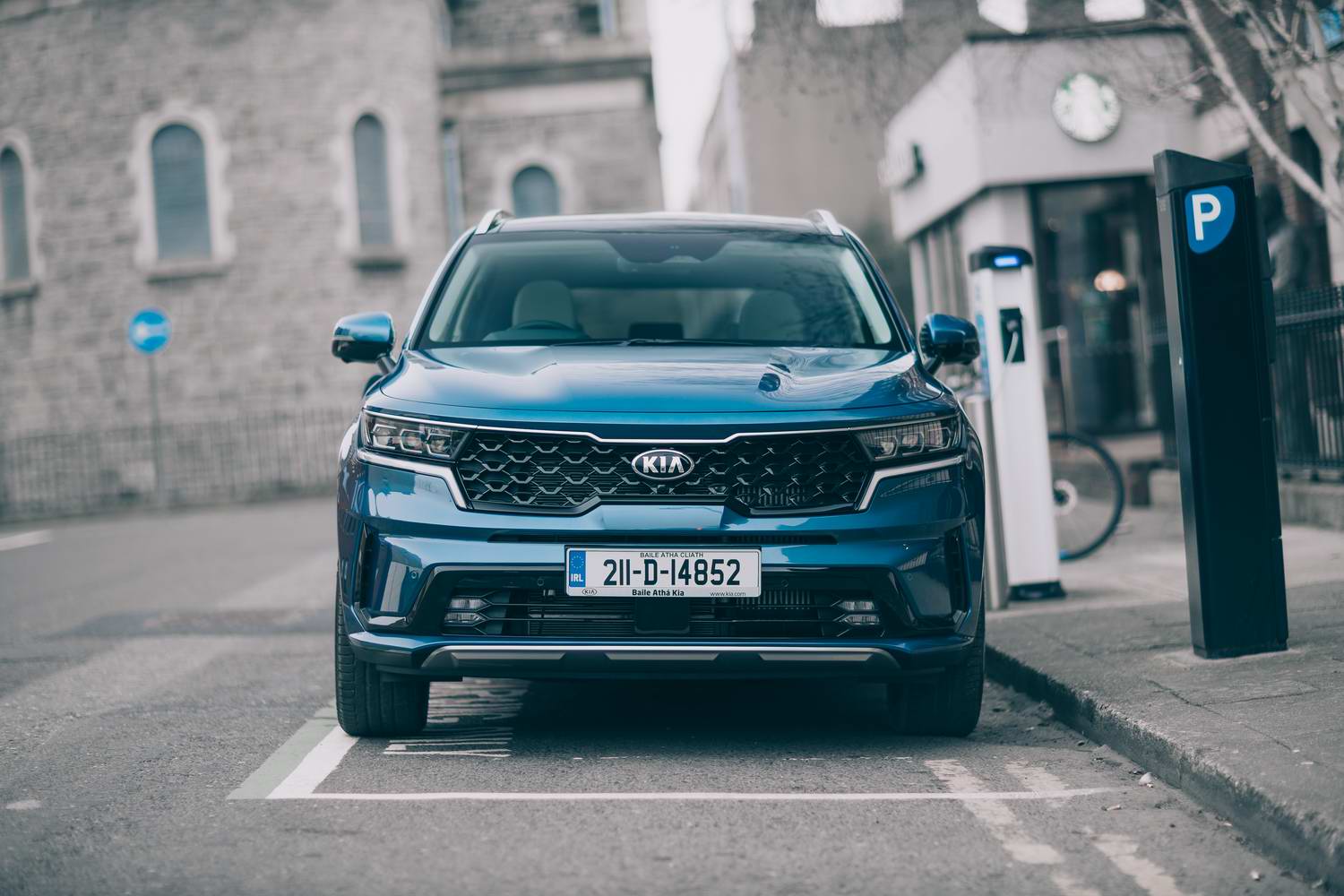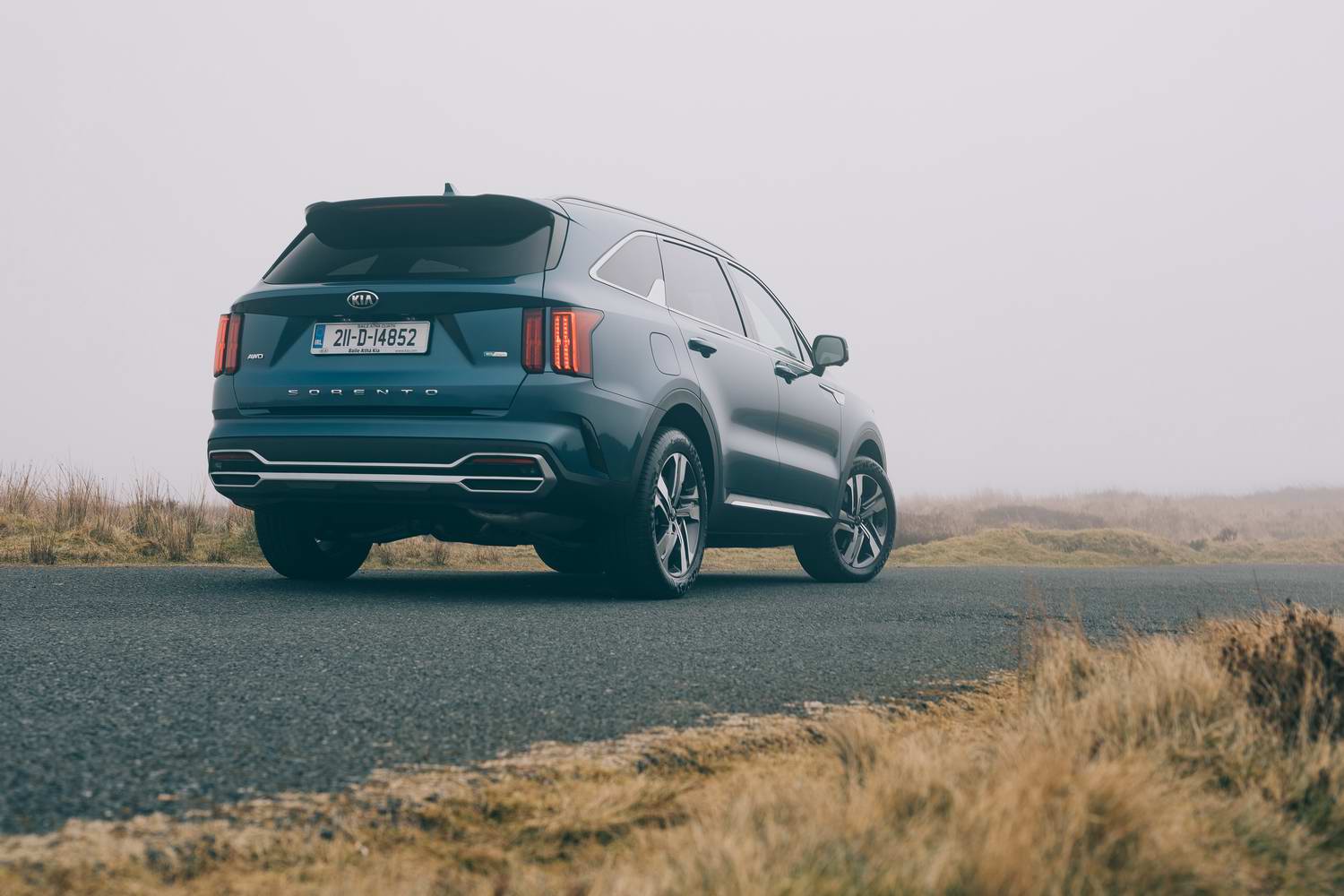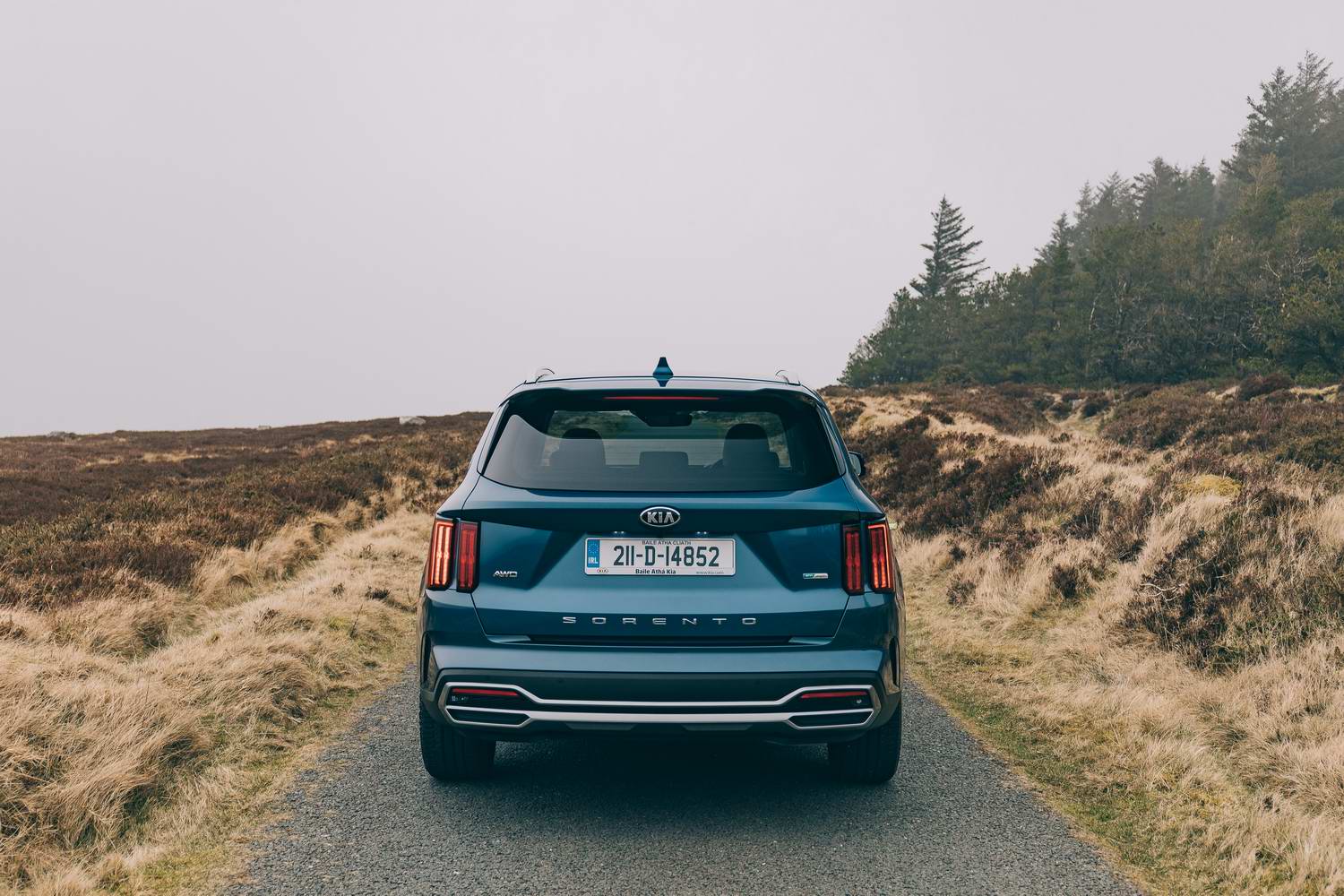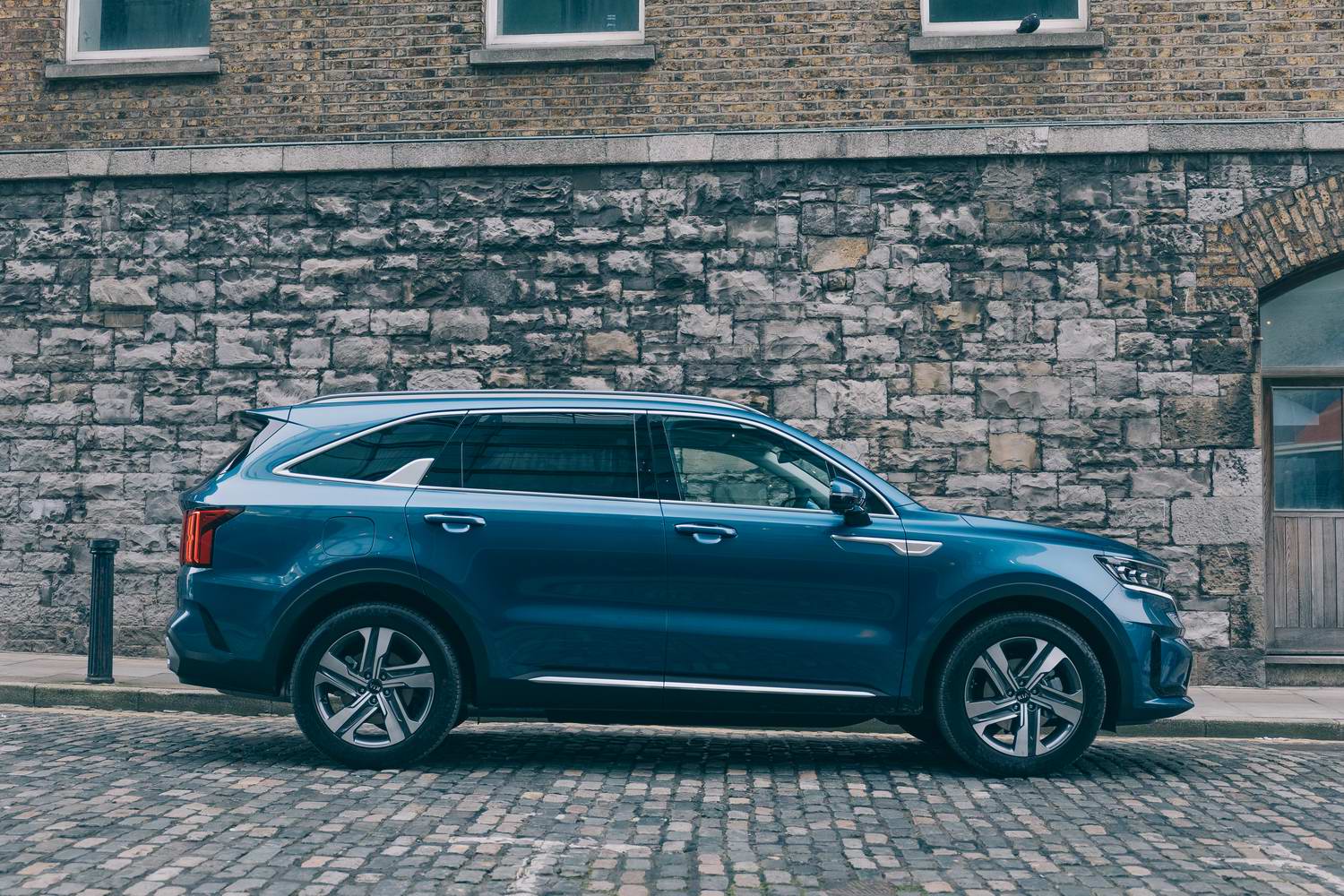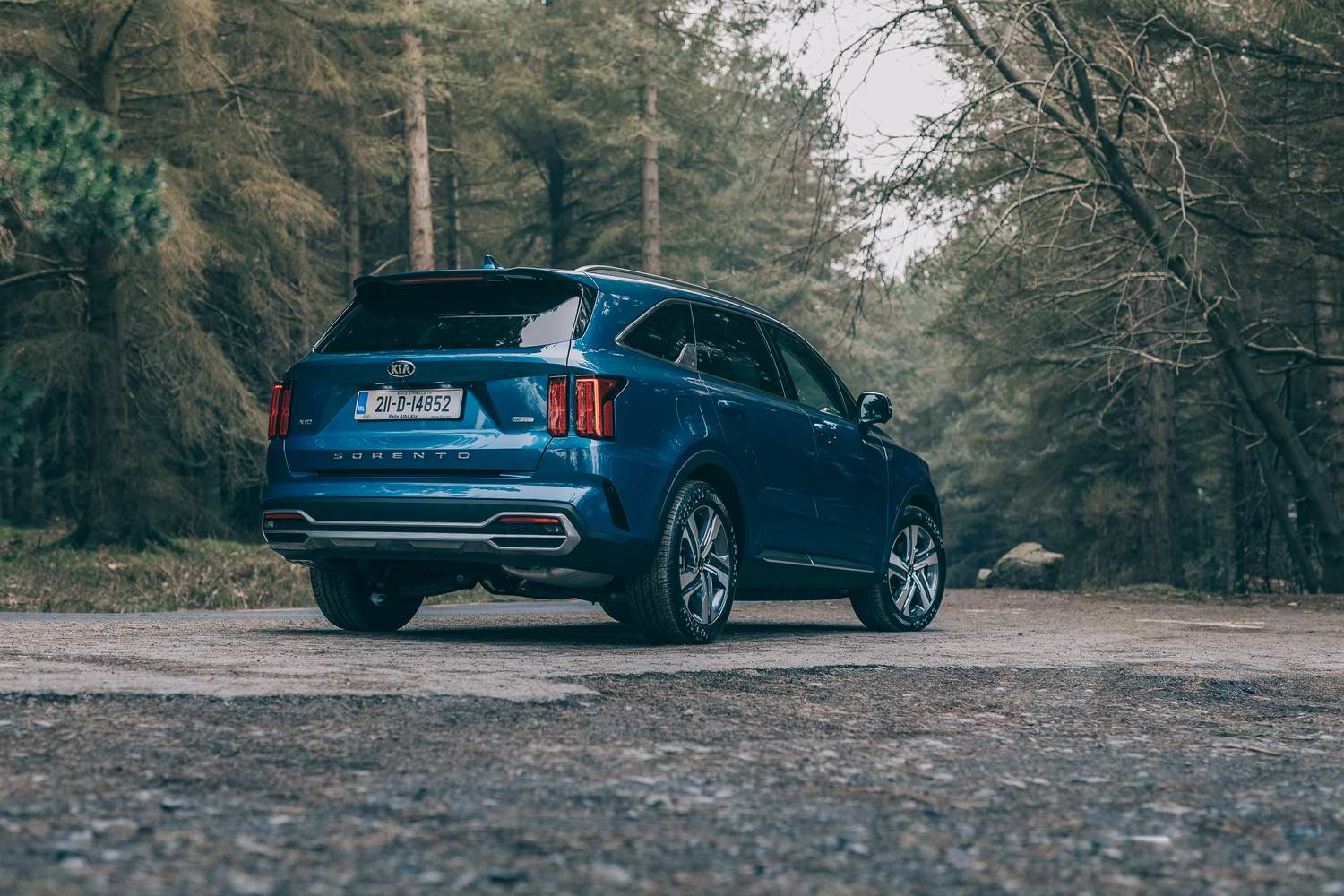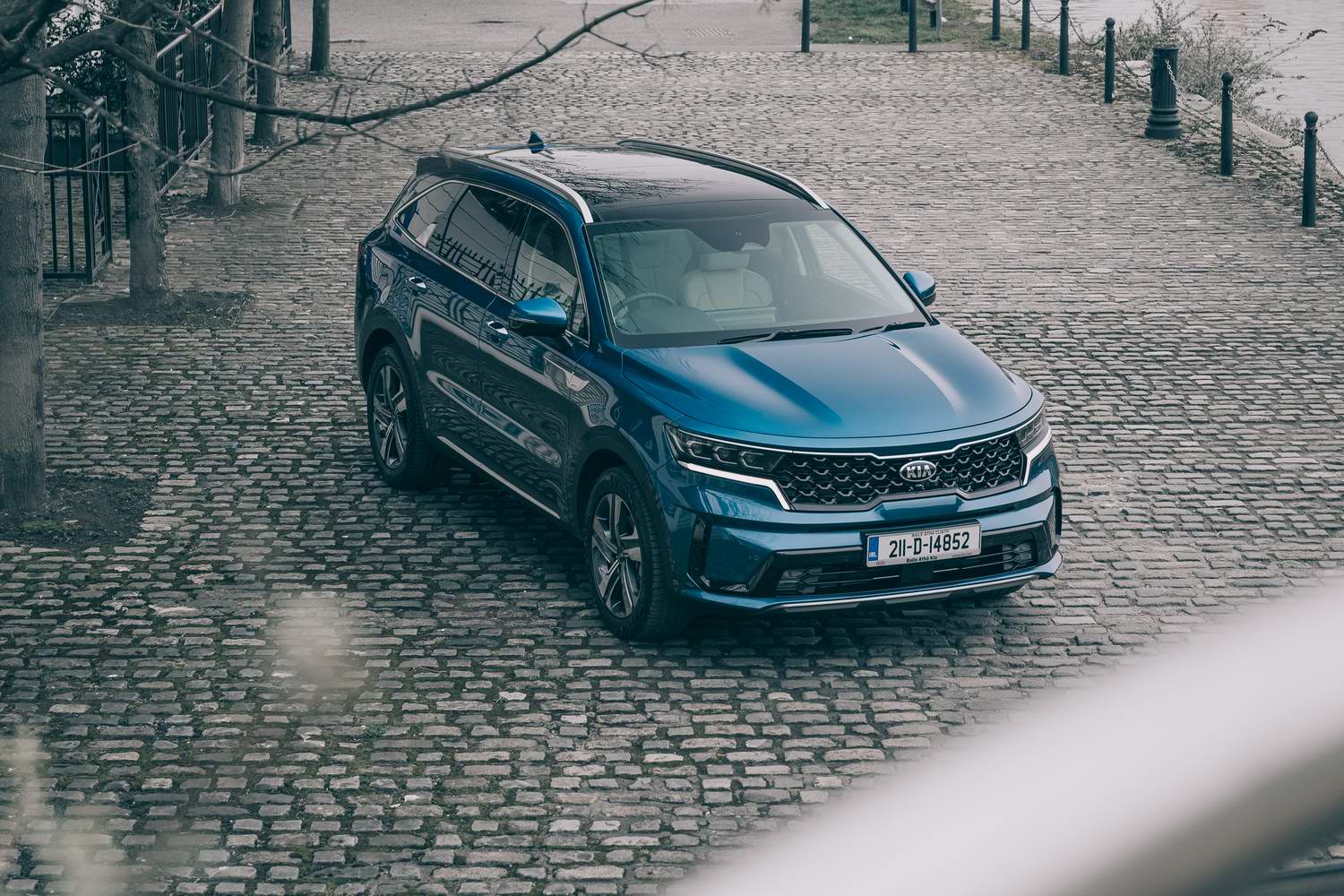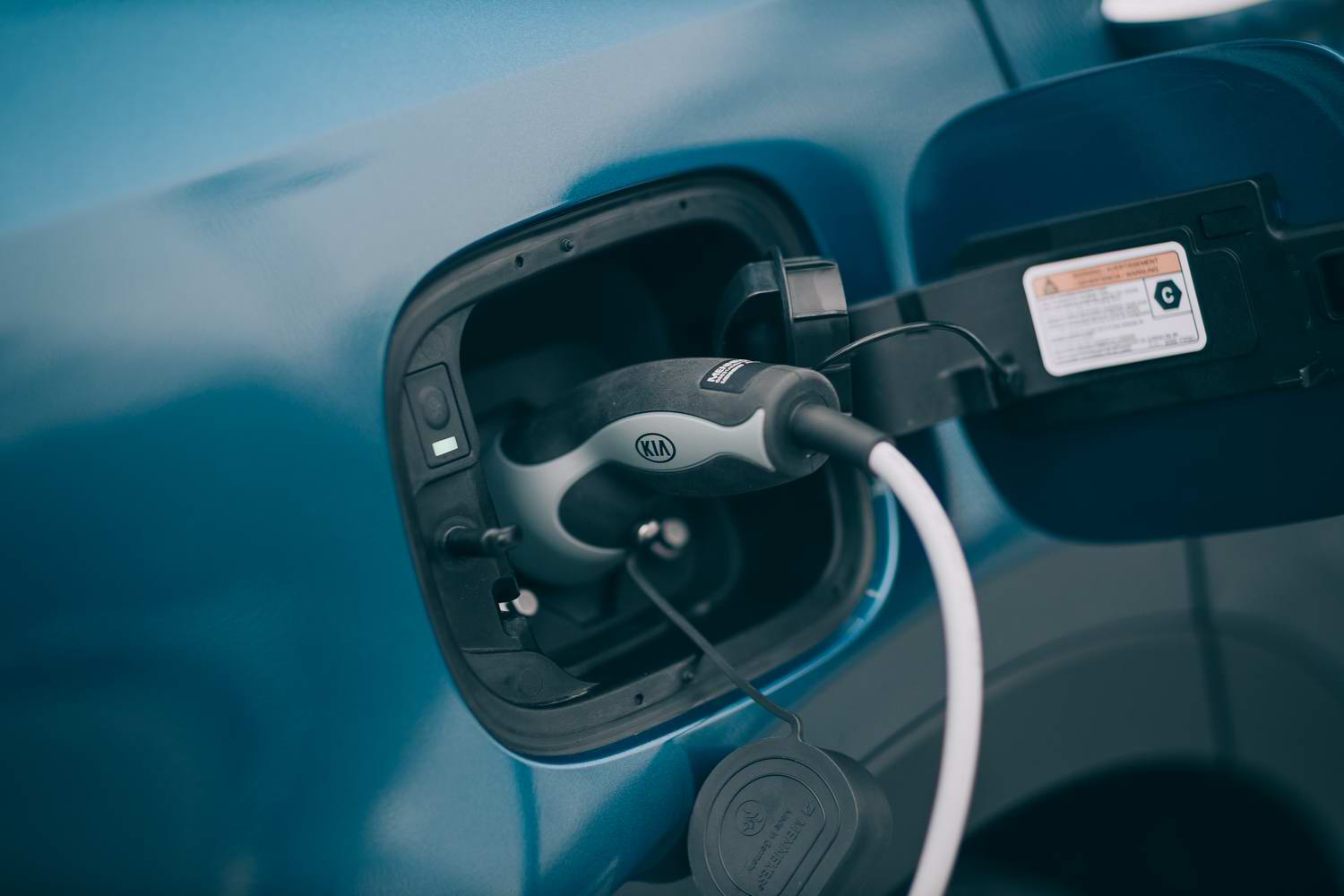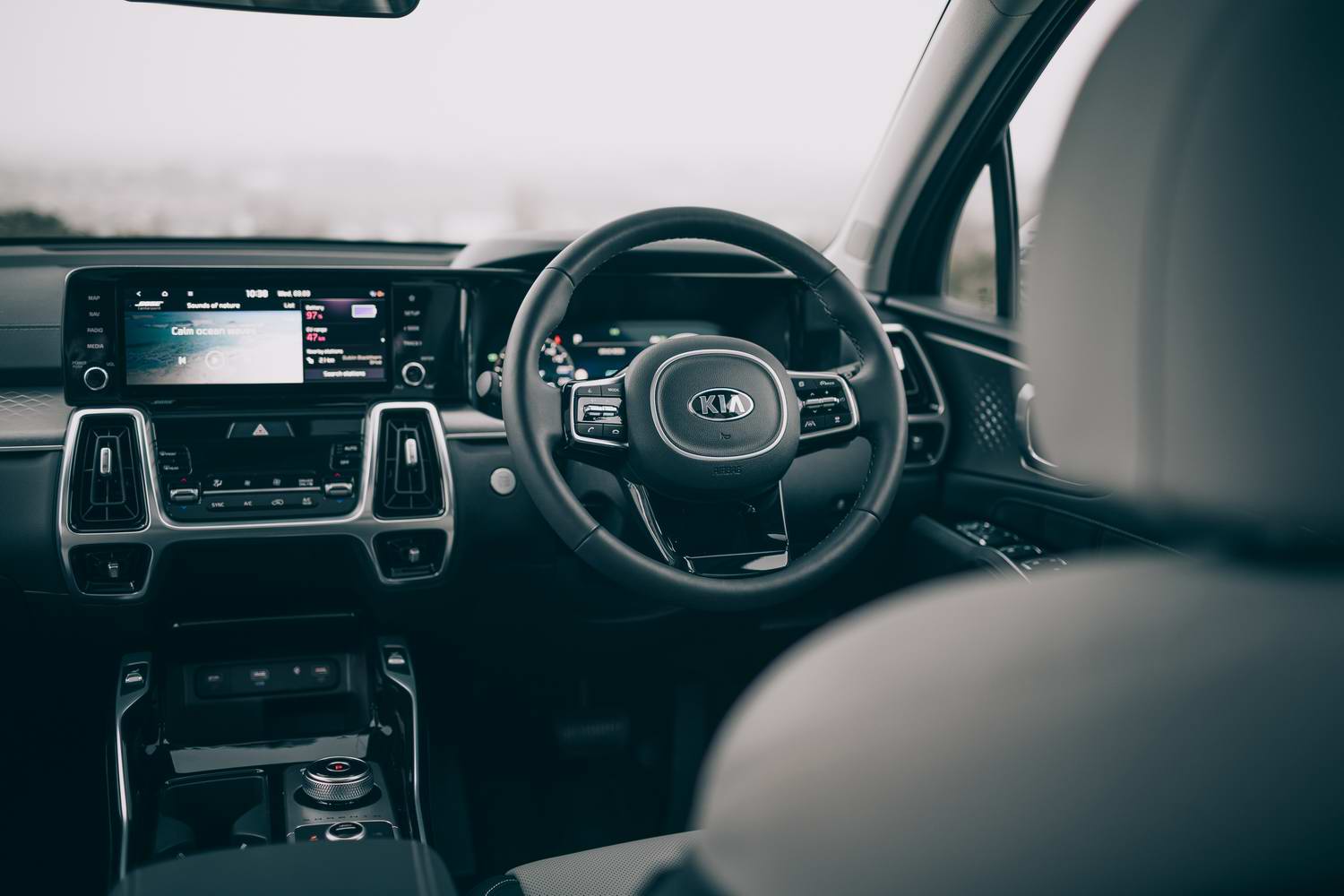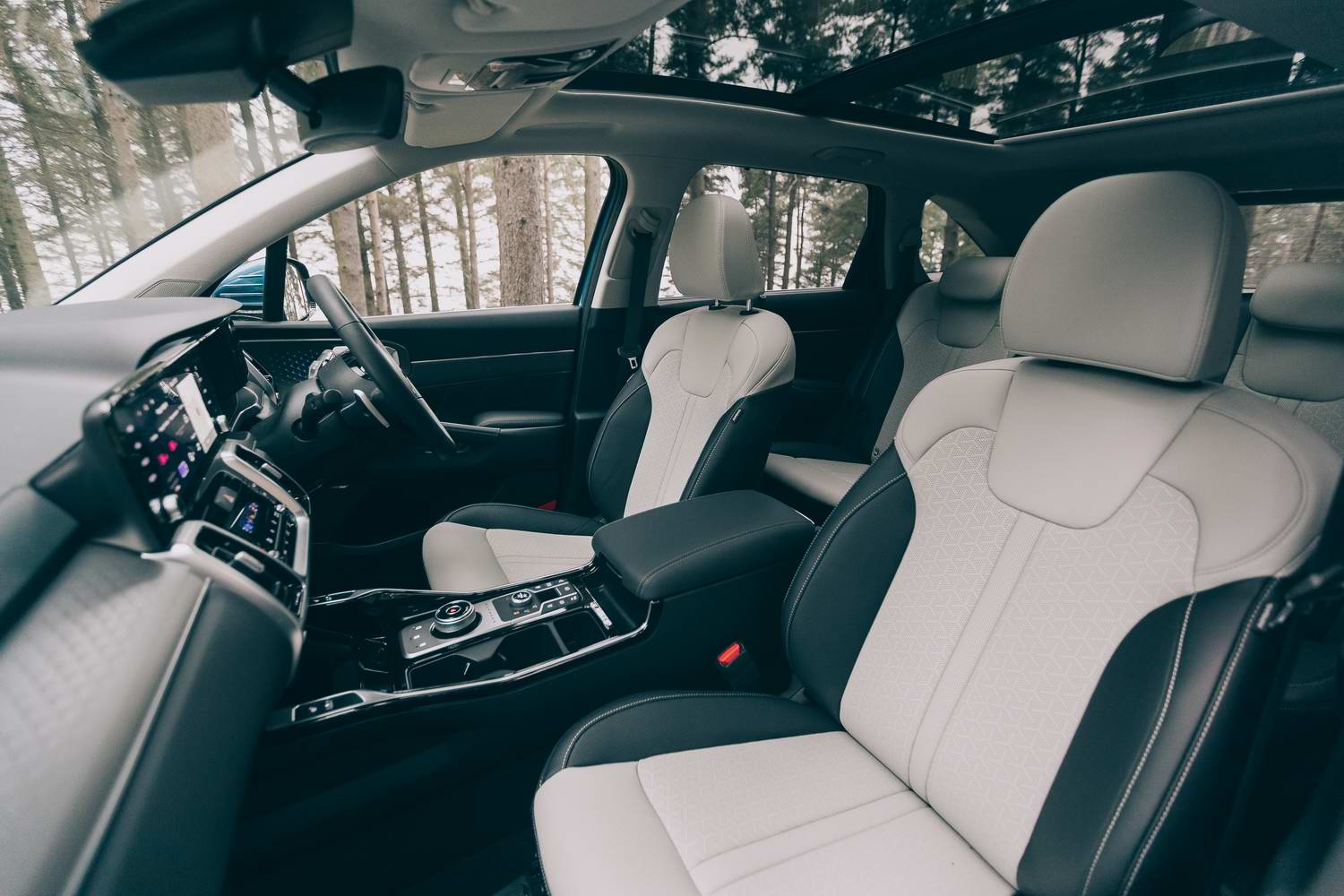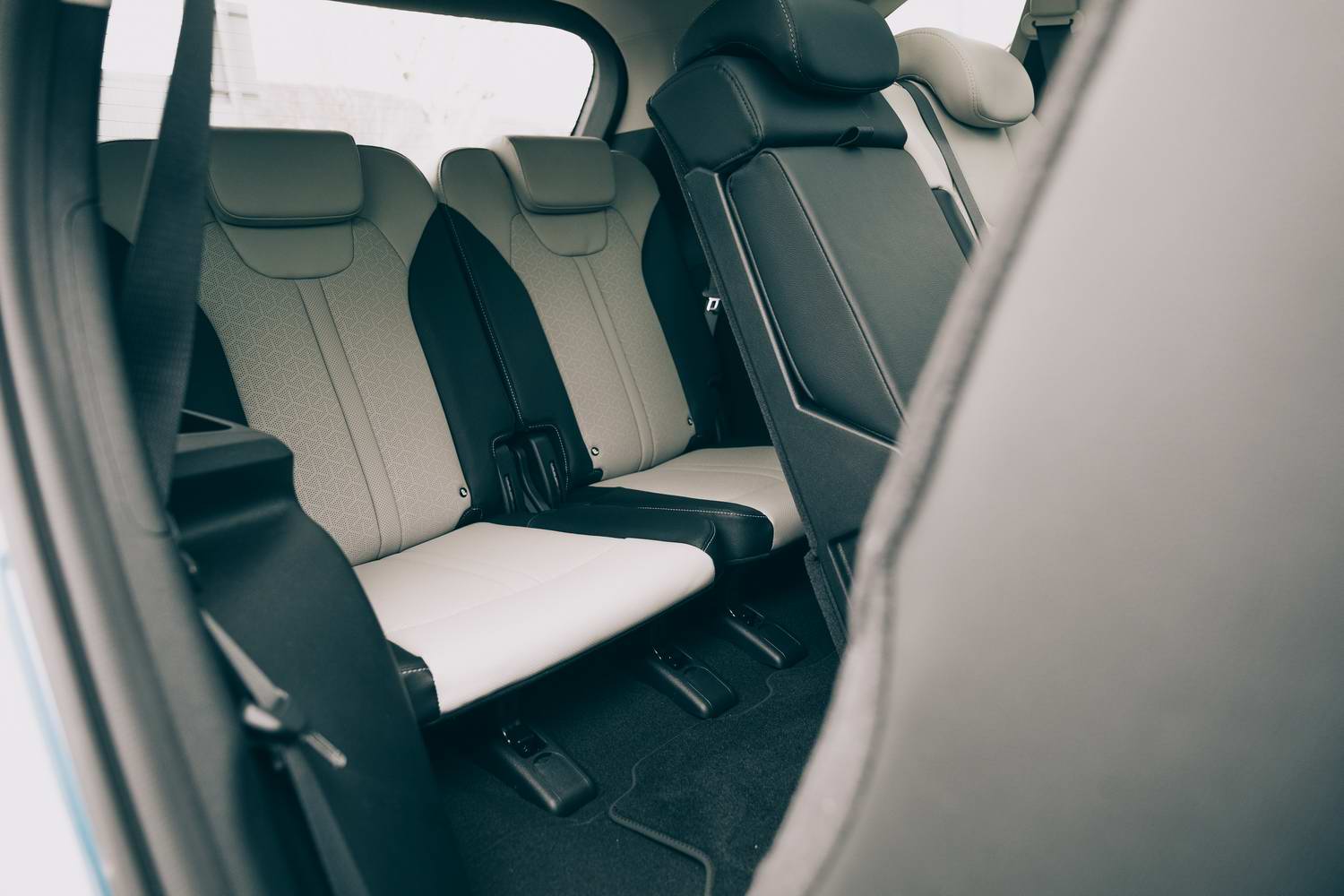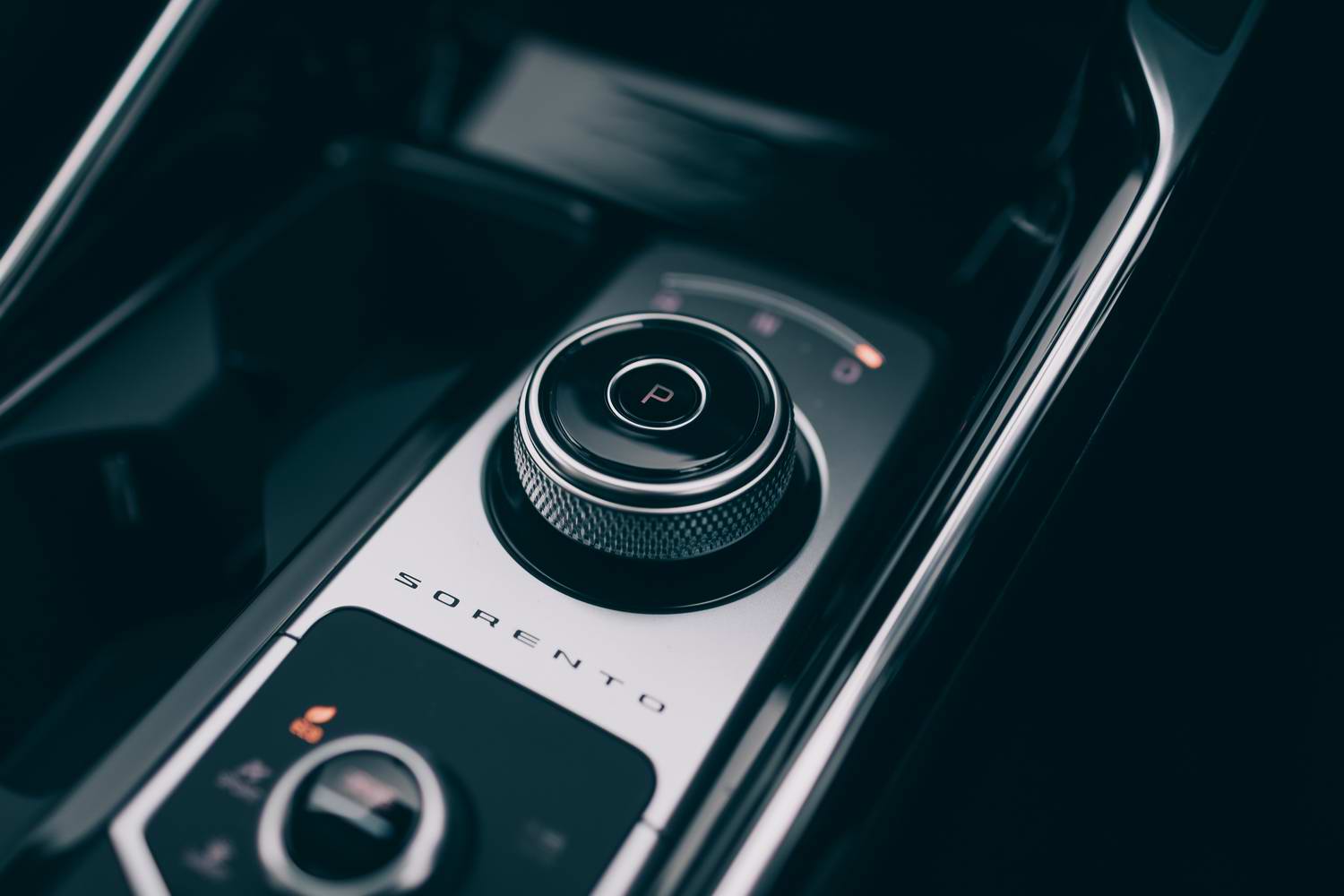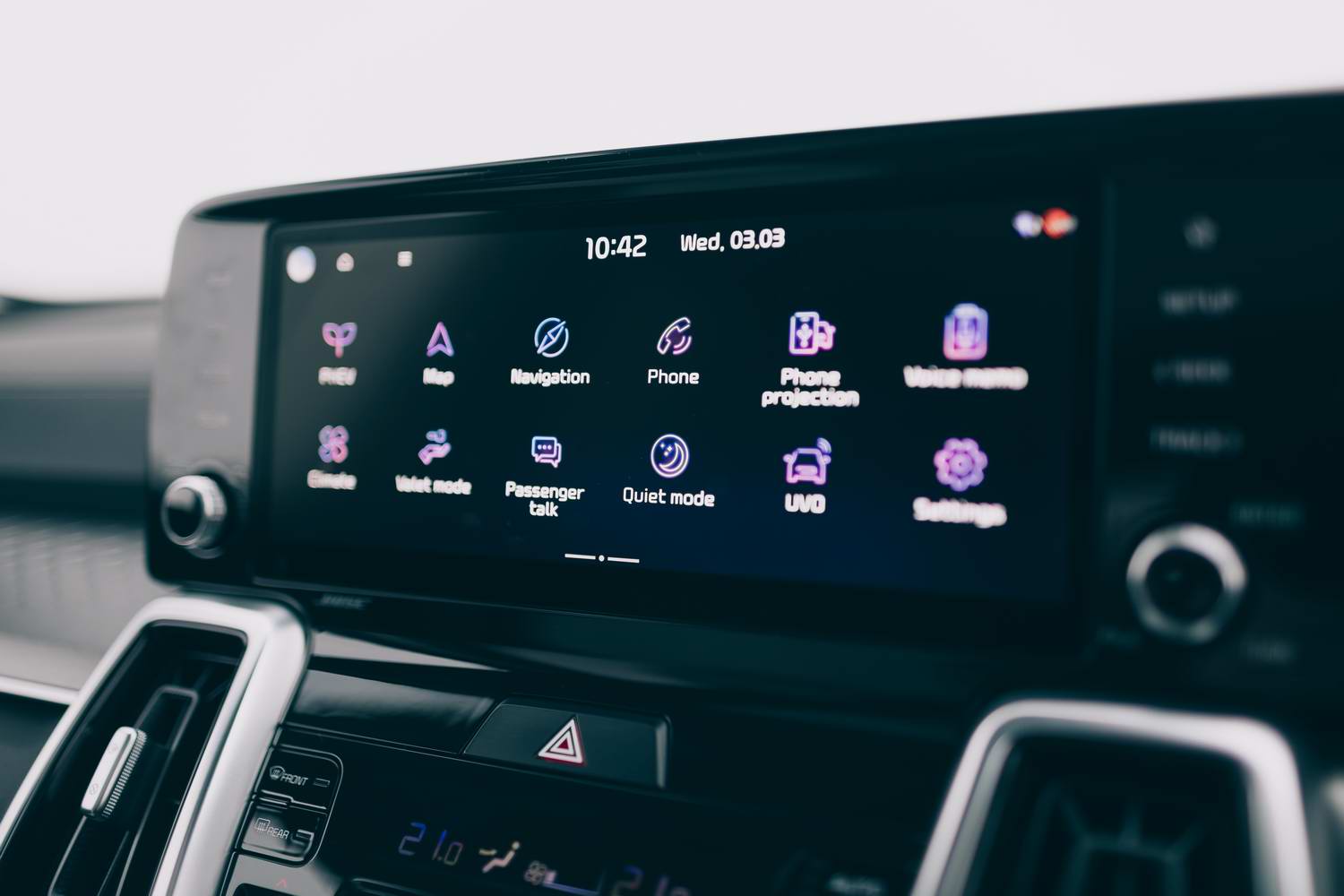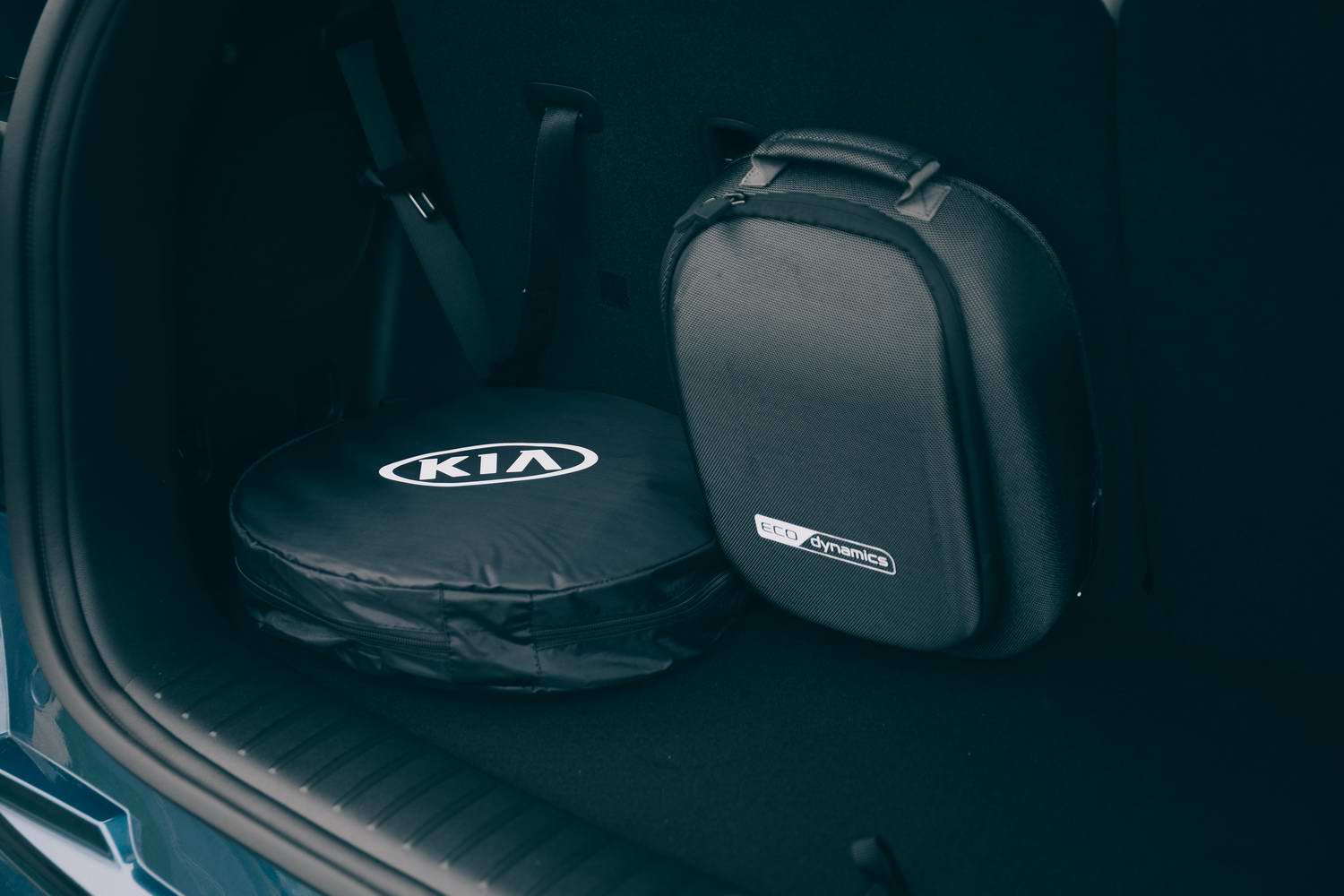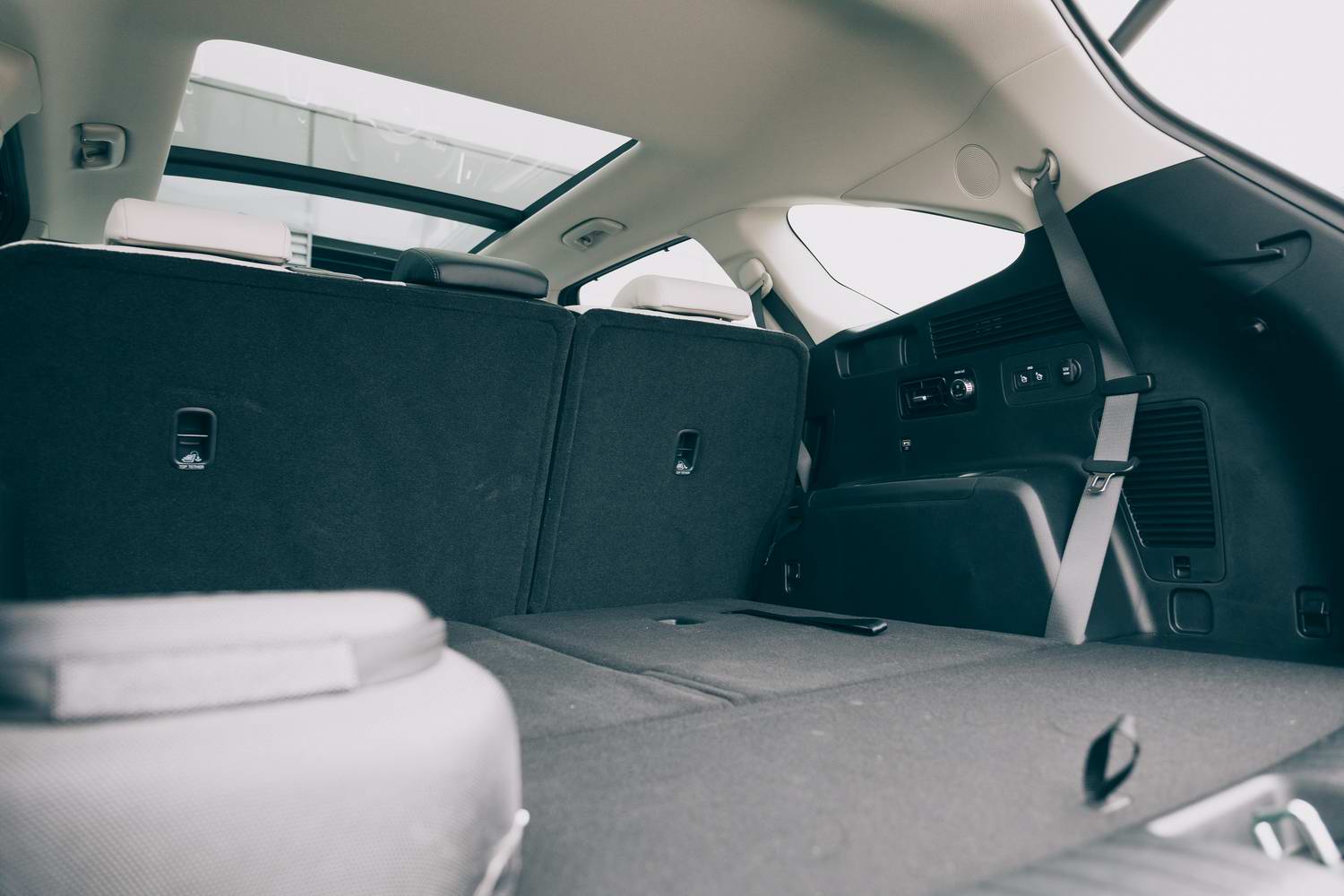Kia Sorento PHEV overview
The Kia Sorento is the Korean manufacturer's largest SUV, sold exclusively in seven-seat format in Ireland. The fourth-generation Sorento launched in 2020 with 2.2-litre diesel power and now the range is being expanded by the addition of a plug-in hybrid model, called the Sorento PHEV (Plug-in Hybrid Electric Vehicle). The only external clue, other than badging, is the extra 'fuel filler flap' on the opposite side to the standard one, covering the charge port.
Under the bonnet of the hybrid Sorento is a turbocharged 1.6-litre petrol engine. On its own, it makes 180hp and 265Nm of torque. However, there's an electric motor between it and its six-speed automatic gearbox, which can make up to 91hp and 304Nm as well. Working together, the system maximums are chunky figures of 265hp and 350Nm, making the hybrid more powerful than the Sorento diesel, though the diesel produces more torque.
Nonetheless, Kia Ireland doesn't offer the diesel engined Sorento with all-wheel drive, whereas the hybrid model gets 4x4 as standard, and it can use four-wheel drive whether it's in zero emissions electric mode or not.
On that subject, the Sorento PHEV has a 13.8kWh lithium-ion polymer battery pack that's shaped to lay over the driveshaft underneath the floor in the area of the front seats. Kia quotes an all-electric range of 57 kilometres on the WLTP cycle, or up to 70km around town.
Including the SEAI grant of €5,000 for plug-in hybrids, the Kia Sorento PHEV is the cheapest way into Sorento ownership. Will it become the default choice in the big SUV range?
The Kia Sorento model range
Split into K3 and K4 trim lines, the Sorento PHEV starts at €50,000 including the grant. That compares to €52,440 for the entry-level diesel model in the same specification - and the diesel isn't a 4x4 remember. All Sorentos sold here get seven seats.
Kia is generous with equipment across the line-up. The K3 comes with auto-folding door mirrors, LED lights all-round, leather upholstery, electrically adjusted driver's seat, heated front seats, a 10.25-inch touchscreen system, Bluetooth, Android Auto and Apple CarPlay smartphone mirroring, USB ports, keyless entry and start, heated steering wheel, auto wipers and lights and a massive number of safety features.
For a €5,000 premium, the Sorento K4 adds rear privacy glass, a panoramic sunroof, ambient lighting, two-tone leather upholstery, electric adjustment for the front passenger seat, heated rear seats, Bose sound system, wireless phone charger and an electric tailgate.
The K4 also gets a little more safety equipment, in the forms of Reverse Parking Collision Avoidance Assist, 360 Around View Monitor and the excellent Blind Spot View Monitor system that shows a live view of your blind spot within the instruments in the dashboard when you turn on the indicators.
Thanks to its ability to run on electric power, the official CO2 rating of the Sorento PHEV is just 38g/km, so annual motor tax is only €140. The Sorento diesel, incidentally, emits 165g/km on the WLTP cycle, which means a yearly bill of €420.
In terms of finance, a two-year, three-year or four-year Hire Purchase agreement means an APR of 3.9 per cent and a minimum deposit of 40 per cent. The monthly repayments would then be €1,217, €827 or €632, respectively. Go for a five-year HP and it's a 4.9 per cent APR with a minimum deposit of €5,060 and then a monthly repayment of €853.
On PCP, the APR is 3.9 per cent and the deposit must be between 10- and 30 per cent. At the latter, the monthly repayment over 37 months works out as €511.
These finance figures are correct at the time of writing, but it's worth checking the official Kia Ireland website for the latest numbers.
The Kia Sorento PHEV interior
You climb up into the interior of the Kia Sorento, like a proper SUV. That gives you a great view out in all directions and, thankfully, there are loads of safety systems built in to fill in the spaces you can't easily see. There's plenty of adjustment in the steering wheel and seat and the cabin immediately gives the impression of high quality. There's a wide mix of colours and textures used throughout, breaking up large expanses of plastic material and adding to the premium feel.
Aside from that, the upright dashboard looks impressive - and it works well, too. In front of the driver is a set of digitally rendered instruments, which are relatively straight forward and easy to read at a glance. Their appearance changes only slightly according to the chosen driving mode.
Aligned with those, within a shiny black surround, is the widescreen touch interface. Kia has established itself as a creator of intuitive touchscreen menus, and the Sorento's is no different. There are useful physical shortcut buttons either side of the display.
Under that are four stylised air vents and the neat, easy-to-use climate control system. The tactile switches for the electric seats are mounted on the centre console below.
That console has loads of storage, ahead, to the side and behind the rotary drive selector and another circular control for the driving mode. The width of this, and the central armrest, serve to emphasise how much space there is between the front seats.
The Sorento's width is used to good effect in the back. And the rear seats are accessed by notably wide-opening doors. Those doors, incidentally, feature high-mounted cup-holding recesses, which are a genius idea. Three adults can fit in the second row without issue, and they can make use of the cleverly situated USB ports in the sides of the front seats. There are actually seven USB ports in total in the car, all of the traditional Type A.
There's probably enough width in the second row to fit in three child car seats or boosters - depending on how wide they are. The outer two chairs have ISOFIX and top tethers, as do the two rearmost seats.
Those are, as ever, quite cramped for adults to sit in, but handy for kids or for occasional use. They even get their own air conditioning controls. The middle row seats can slide forward to make more space in the back, when required.
All five rear seats can easily fold down to make a relatively flat space. It's huge, too, though even with just the rearmost chairs folded away, there's more than 800 litres of luggage volume to play with.
All of this is as per the diesel Sorento, as there appears to be no compromises to the car's practicality in moving to hybrid power.
The Kia Sorento PHEV driving experience
As mentioned above, the high-set driving position gives the driver a commanding view of the road ahead. And that helps make the experience more relaxing. The refined powertrain underlines that feeling. Obviously, when running on purely electric power, it's a quiet car, with only a faint whisper of electrical whine in the distance that's soon drowned out by tyre noise. Not that this is excessive. The petrol engine itself is well-isolated from the cabin so it's never loud.
It's simple to drive, too, with no special knowledge of the hybrid powertrain required. Press the brake pedal, twist the rotary selector into D and away you go. You can if you wish change the driving mode to Eco for maximum efficiency or Sport for maximum performance, while 'Smart' is the standard setting that is supposed to adapt to the driver. We expect most to leave it at that.
For slippery conditions, the all-wheel-drive system has selectable modes too: Snow, Mud or Sand. These subtly alter the traction control, the split of torque between the wheels and the shift pattern of the automatic gearbox to help keep you moving. Otherwise the four-wheel drive works automatically according to conditions.
Back on the road, if you put your foot all the way down on the accelerator, the Sorento PHEV feels fast, as it should with up to 265hp produced, though it loses its veneer of civility. Best to keep that for when strictly necessary. More importantly, it's good to know that it has enough go to cope with a car full of people and luggage, and it can tow up to 1,500kg of braked trailer.
In terms of comfort, the Sorento is particularly good at motorway cruising speed. It's not bad at slower speeds though, thanks to sensible tyre sidewalls. Nevertheless, it's a neat handling SUV, too, imbuing the driver with confidence and shrugging off poor surfaces and wet roads with ease.
As part of our test, we charged the battery up fully at a home charger and then drove a 25km route that included about eight kilometres at urban speeds in traffic and then the remainder on the M50, sticking to the 100km/h speed limit. The 'EV' button was pressed at the start to maximise electric running, but even so the engine started up a few times when a little more acceleration was required. Nonetheless, at the end of the journey, the electric range meter still showed about 20km.
Alternatives to the Kia Sorento PHEV
At the time of writing, there aren't loads of direct rivals to the Sorento PHEV on the Irish market. By direct, we mean large SUVs with seven seats, a plug-in hybrid powertrain and around the €50,000 mark. There's a new Hyundai Santa Fe imminent, sharing the same platform as the Kia. And it will get the same plug-in hybrid system, so depending on pricing, that will likely be the Sorento's closest rival.
Below those two in size are the likes of the Skoda Kodiaq, SEAT Tarraco, Volkswagen Tiguan Allspace and Mercedes GLB. Plug-in hybrid versions of the GLB and Tarraco have been confirmed, and we expect the Kodiaq and Tiguan Allspace to follow suit eventually.
There are plug-in hybrid SUVs from the premium brands, too, but only the Volvo XC90 has seven seats, and that's much more expensive than the Sorento. The new Toyota Highlander is more affordable than the Volvo, but still not cheap, and not a plug-in hybrid, but still worth a look, especially if you can't/don't want to fit a charger at home for some reason.
Our verdict on the Kia Sorento PHEV
In the matter of a few years, Kia has completely reinvented its Sorento SUV. It started out as a hardy workhorse of a 4x4 and has evolved into a luxurious family car. The transformation is complete now that there's an efficient plug-in hybrid model to opt for instead of the diesel. Sure, the diesel still better-suits some buyers, but the hybrid is a brilliant option for families that need the seven-seat layout but want to move on from diesel power. So long as they have somewhere they can plug the car in regularly, it should become the primary Sorento to buy.

